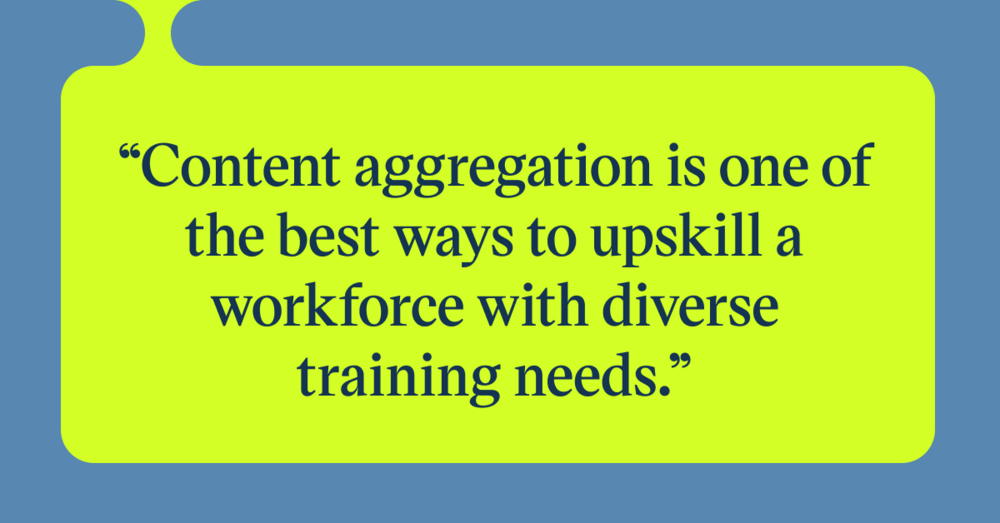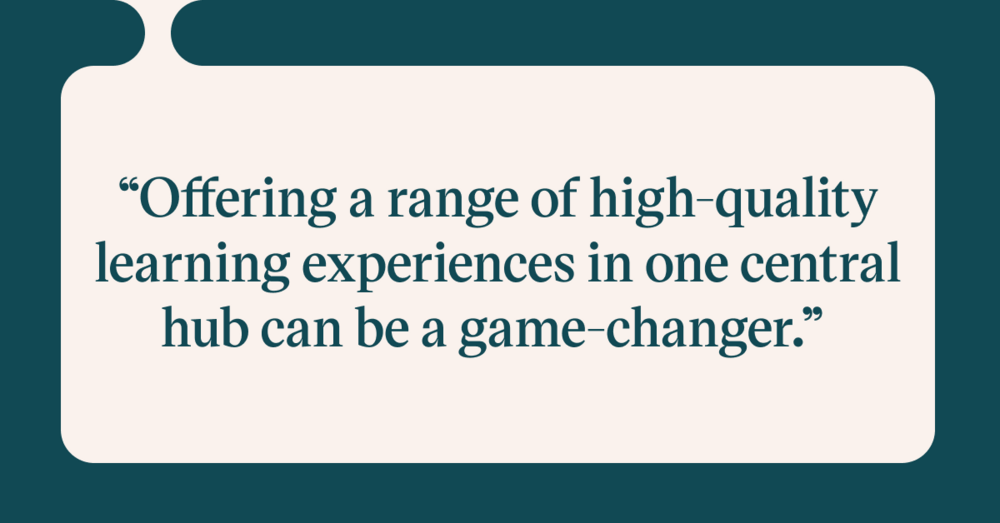Why content aggregation is changing L&D
)
Content aggregation is fundamentally changing L&D for the better. At the moment, employees only spend 24 minutes — or 1% of their time — on learning in a typical week. Two-thirds say that they don’t even have enough time to do their jobs, let alone engage in professional development, while 49% of people say they don’t have time to learn at work. Other estimates find that the average company provides just 55.4 hours of training per employee per year.
Even when people can set aside time for learning, it’s rarely spent in the most productive or streamlined way. According to research by the IDC, the average “knowledge worker” spends 25% of their time either searching for information or analysing information: 9.5 hours searching for information and 9.8 hours analysing information. When learners already lack time, this is concerning.
Additionally, a 2018 study by Josh Bersin and Deloitte found that learners do not suffer from a lack of content, but rather, “the issue is that there is too much available content, making it a task itself to sift through the bad to get to the valuable.”
Put together, these statistics reveal two worrying L&D trends. Firstly, most employees don’t have enough time for learning and professional development. Secondly, when time is set aside for learning, learners spend more time looking for relevant content than actually learning. Analysis paralysis has set in.
Enter, content aggregation. One of the hottest L&D trends of 2021, content aggregation can flip this dynamic on its head by offering a centralised hub so that learners can spend less time looking for relevant content and more time learning.
As such, we’ve decided to analyse why content aggregation is changing L&D. We’ll start by asking what content aggregation is, before explaining how it is changing the L&D landscape.
What is content aggregation?
Content aggregation is the process of collecting, or ‘aggregating’, a variety of digital learning providers and making them available in one convenient, central location, such as the Go1 Content Hub. As a result, content aggregation is one of the best ways to upskill a workforce with diverse training needs.

To demonstrate how this plays out in action, the Go1 Content Hub offers learning content from global, regional, and specialised providers. This digital library provides over 100,000 resources from more than 150 world-class content partners, meaning you can access a vast range of topics that cover both general and industry-specific learning.
Content aggregation addresses the common pain point of trying to deliver relevant learning content to different teams and learning styles within a business, all on tight time constraints and an even tighter budget.
Usually, something has to give and one team misses out. However, a content aggregator addresses these issues by providing diverse, high-quality, and convenient content to appeal to any learning style.
Content aggregation contrasts with popular single-provider platforms. Both approaches have their benefits and drawbacks, so we recommend researching which model suits your organisation before committing to a digital learning platform.
Ultimately, a content aggregation model means all of your learning needs are catered for in a single subscription, so you don’t have to compromise on the quality or quantity of your learning content. By collecting everything in one central, convenient location, learners can spend less time searching for content and more time learning.
How is content aggregation changing L&D?
Now that we know what content aggregation is, it’s time to address the big question: how is content aggregation changing L&D? The simple answer is that it’s changing L&D for the better.
In an article looking at Go1’s recent series D funding announcement, Josh Bersin explains why content aggregation has become such a hot topic in L&D. In Go1’s case, he attributes the success of an aggregation model to “a vast library of 150,000+ titles, access to the world’s best content (including our Josh Bersin Academy), and an easy-to-buy, easy-to-use business model.”
A recent survey from eLearning Industry backs up these feelings. According to their survey, content curation/aggregation (the terms are used interchangeably in this research, although we would argue that some nuances the terms) is gaining popularity. A massive 78% of respondents feel that L&D must incorporate content aggregation as a new skill, with 42% saying the main benefit of content aggregation is continuous learning and 38% saying the main benefit of content aggregation is the ability to provide high-quality content in a timely manner.
When learners are starved for time and overwhelmed by choice, offering a range of high-quality learning experiences in one central hub can be a game-changer. By facilitating timely, relevant learning that can appeal to diverse learning styles, content aggregation is changing L&D for the better.

Speak to Go1 about transformational learning at the HR + L&D Innovation & Tech Fest, 3-4 February. They will be sharing advice about using new workplace technology to drive better learning engagement and will be on hand to answer your questions.
*Sponsored: article courtesy of Go1

